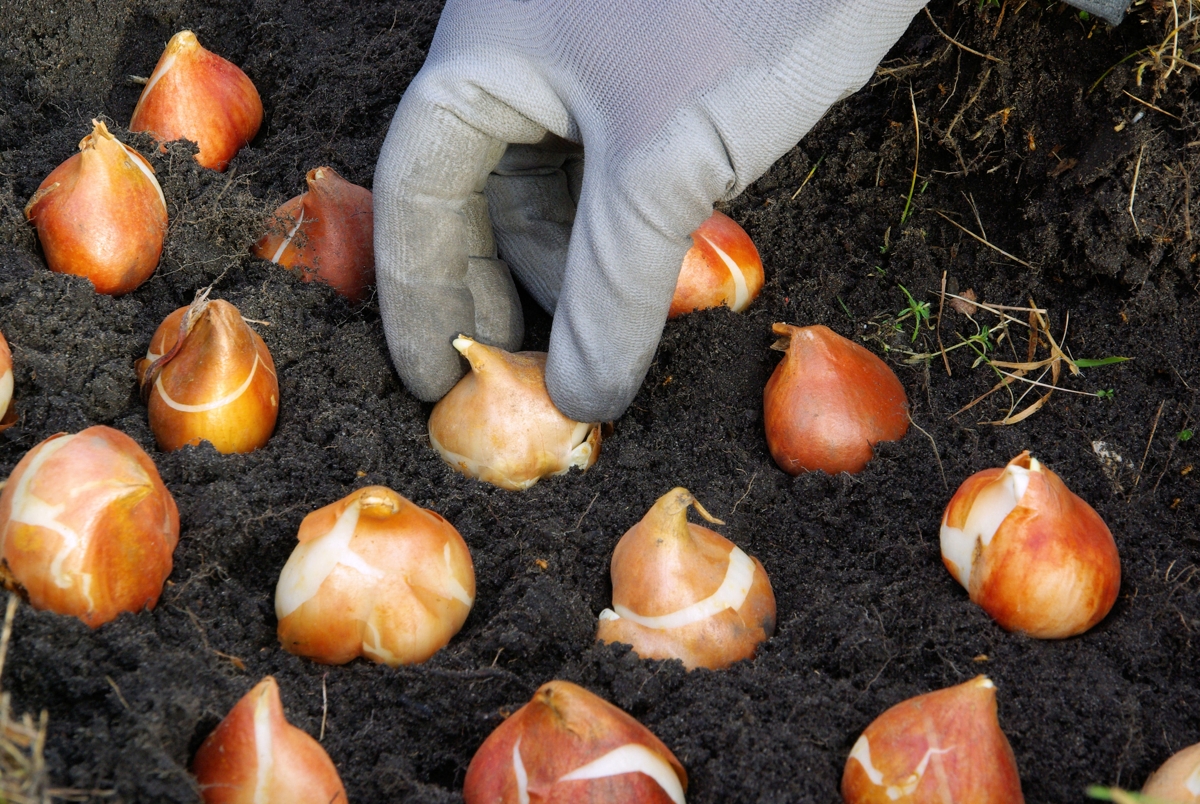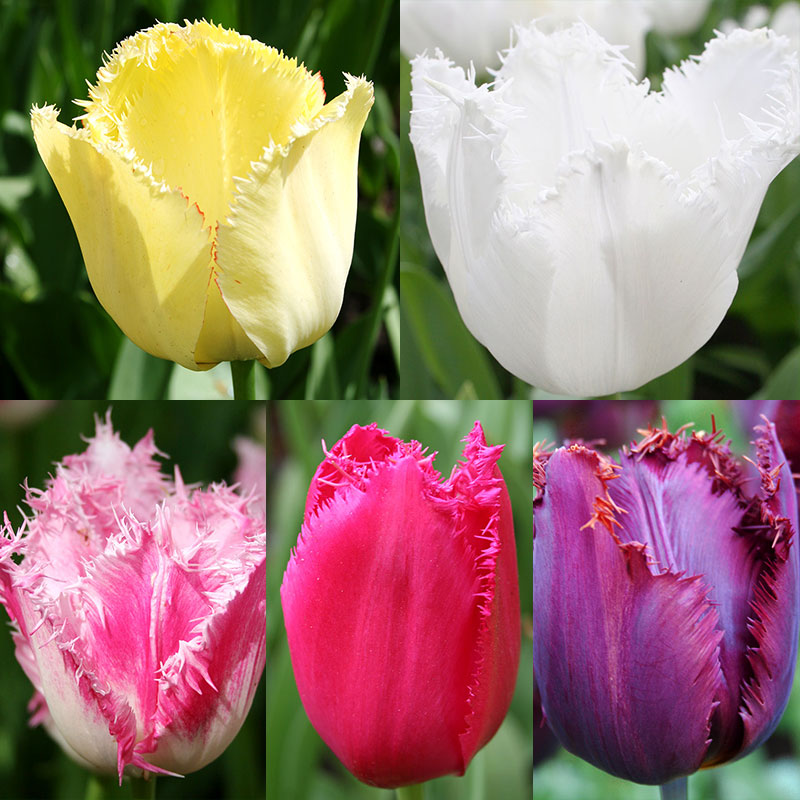Choosing the Right Tulip Variety for Your Garden
Selecting the perfect tulip variety is a crucial step in ensuring a beautiful and thriving bloom. With over 150 species of tulips, it’s essential to understand the different types and their characteristics to make an informed decision. Darwin Hybrids, Fosteriana Tulips, and Species Tulips are popular varieties that thrive in various climates and soil types. For instance, Darwin Hybrids are known for their large, vibrant blooms and are ideal for gardens with full sun and well-draining soil. Fosteriana Tulips, on the other hand, are more compact and suitable for containers or rock gardens. Species Tulips, with their delicate, slender petals, are perfect for naturalizing in lawns or meadows. When selecting a tulip variety, consider factors such as your garden’s climate, soil type, and amount of sunlight. By choosing the right tulip variety, you’ll be one step closer to enjoying a stunning display of colorful blooms.
Preparing the Soil for Tulip Planting
Before planting tulip bulbs, it’s essential to prepare the soil to ensure a healthy and thriving bloom. Soil preparation is a critical step that can make all the difference in the success of your tulip garden. The first step in preparing the soil is to test the pH level. Tulips prefer a slightly acidic to neutral soil pH, ranging from 6.0 to 7.0. If your soil is too acidic or alkaline, you can adjust the pH by adding lime or sulfur accordingly. Next, add organic matter such as compost or well-rotted manure to improve soil structure and fertility. This will help to retain moisture, suppress weeds, and provide essential nutrients to your tulips. Remove any debris, rocks, or weeds from the planting area to prevent competition for water and nutrients. Finally, till the soil to a depth of 8-10 inches to loosen and aerate it. By following these steps, you’ll be creating a welcoming environment for your tulip bulbs to grow and thrive. Remember, proper soil preparation is key to successful tulip planting, so take the time to get it right. When you’re ready to plant, you’ll want to know how deep to plant tulip bulbs, so be sure to check the specific instructions for the variety you’re planting.
How to Plant Tulip Bulbs at the Right Depth
Planting tulip bulbs at the correct depth is crucial for their growth and development. The general rule of thumb is to plant tulip bulbs at a depth that is two to three times the height of the bulb. For example, if the bulb is 2 inches tall, plant it at a depth of 4-6 inches. However, the exact planting depth may vary depending on the specific tulip variety and climate. In warmer climates, it’s recommended to plant bulbs at a deeper depth to protect them from heat and dryness. In cooler climates, a shallower depth is sufficient. When planting in containers, make sure the pot is at least 6-8 inches deep to accommodate the bulb and its roots. To plant tulip bulbs, start by digging a hole that is the correct depth for your bulb. Place the bulb in the hole, pointed end up, and cover with soil. Firm the soil gently to remove any air pockets. Water the soil well to settle the soil and provide enough moisture to support growth. Remember, how deep to plant tulip bulbs is a critical factor in their success, so take the time to get it right. By following these steps, you’ll be well on your way to enjoying a beautiful and thriving tulip garden.
The Importance of Planting Tulip Bulbs at the Right Time
Timing is everything when it comes to planting tulip bulbs. Planting at the right time ensures that your tulips will bloom beautifully and thrive in their new environment. In general, the best time to plant tulip bulbs is in the fall, about 6-8 weeks before the first frost. This allows the bulbs to establish themselves in the soil over the winter, and then bloom in the spring. However, the exact planting time may vary depending on your location and climate. In warmer climates, such as in zones 8-10, it’s best to plant tulip bulbs in late winter to early spring, as the soil is cooler and there is ample moisture. In cooler climates, such as in zones 3-5, planting in the fall is ideal. It’s also important to consider the specific tulip variety you are planting, as some may have different planting requirements. For example, some tulip varieties, such as Fosteriana Tulips, may need to be planted in the spring, while others, such as Darwin Hybrids, can be planted in the fall. By planting tulip bulbs at the right time, you’ll be giving them the best chance to grow and thrive. Remember, how deep to plant tulip bulbs is just one aspect of successful tulip planting – timing is also crucial. By following these guidelines, you’ll be well on your way to enjoying a beautiful and vibrant tulip garden.
Tulip Planting Tips and Tricks for Success
While planting tulip bulbs at the right depth and time is crucial, there are several other tips and tricks to ensure successful tulip planting. One of the most important considerations is spacing. Plant tulip bulbs 3-6 inches apart, depending on the variety, to allow for proper growth and air circulation. It’s also essential to water newly planted bulbs well, especially during the first growing season. Water them deeply once or twice a week, depending on weather conditions. Additionally, mulching around the bulbs can help retain moisture, suppress weeds, and regulate soil temperature. When it comes to caring for newly planted bulbs, avoid overwatering, which can lead to rot and other diseases. Instead, focus on providing consistent moisture and fertilizing lightly in the spring when the bulbs are actively growing. Another critical aspect of tulip care is deadheading, or removing the flowers as they fade. This encourages the bulb to focus its energy on re-growing and storing energy for next year’s bloom, rather than seed production. By following these tips and tricks, you’ll be well on your way to growing healthy, vibrant tulips that will thrive for years to come. Remember, how deep to plant tulip bulbs is just one aspect of successful tulip planting – proper care and maintenance are also essential.
Common Mistakes to Avoid When Planting Tulip Bulbs
While planting tulip bulbs can be a rewarding experience, there are several common mistakes to avoid to ensure success. One of the most critical mistakes is planting too shallow. Tulip bulbs need to be planted at a depth that is two to three times their height to allow for proper growth and development. Planting too shallow can lead to weak and leggy stems, as well as reduced blooming. Another mistake to avoid is planting in poorly draining soil. Tulips need well-draining soil to prevent waterlogged soil conditions that can lead to rot and other diseases. Make sure to add organic matter such as compost or well-rotted manure to improve soil drainage and structure. Not providing enough sunlight is also a common mistake. Most tulip varieties require at least six hours of direct sunlight per day to bloom well. Planting in a location that receives partial shade or full shade can lead to weak and spindly growth. Additionally, failing to plant at the right time can also lead to poor results. Planting tulip bulbs too early or too late can disrupt their natural growth cycle and lead to poor blooming. By avoiding these common mistakes, you can ensure that your tulips will thrive and provide beautiful blooms for years to come. Remember, how deep to plant tulip bulbs is just one aspect of successful tulip planting – proper soil preparation, sunlight, and timing are also essential.
Caring for Your Tulips After Planting
After planting tulip bulbs, proper care is essential to ensure they thrive and provide beautiful blooms. One of the most critical aspects of tulip care is fertilization. Feed your tulips with a balanced, slow-release fertilizer in the spring when the bulbs are actively growing. This will provide them with the necessary nutrients to produce healthy foliage and vibrant blooms. Another important task is deadheading, or removing the flowers as they fade. This encourages the bulb to focus its energy on re-growing and storing energy for next year’s bloom, rather than seed production. Simply snip off the faded flowers at the base of the stem, making sure not to damage the leaves or stem. Additionally, protect your tulips from pests and diseases by keeping an eye out for signs of trouble, such as holes in the leaves or stems, or white, cottony patches on the leaves. Use organic or chemical controls as needed to prevent infestations and infections. Finally, consider applying a layer of mulch around the base of the plants to retain moisture, suppress weeds, and regulate soil temperature. By following these simple care tips, you can enjoy your tulips for years to come. Remember, how deep to plant tulip bulbs is just the beginning – proper care and maintenance are also essential for success.
Enjoying Your Beautiful Tulip Blooms
After weeks of anticipation, your tulips have finally bloomed, and it’s time to enjoy the fruits of your labor. To extend the blooming season, consider forcing tulips, a process that involves potting up tulip bulbs in the fall and keeping them in a cool, dark place until spring. This will allow you to enjoy your tulips for several weeks longer than usual. Another way to enjoy your tulips is to create a beautiful tulip bouquet. Simply cut the stems at an angle, remove any leaves that will be below the waterline, and arrange the flowers in a vase. You can also add some greenery, such as eucalyptus or ferns, to add texture and interest to the arrangement. To make the bouquet last longer, change the water every few days and keep the flowers out of direct sunlight. By following these simple tips, you can enjoy your tulips for weeks to come. Remember, how deep to plant tulip bulbs is just the beginning – with proper care and attention, you can enjoy beautiful blooms for years to come. Whether you’re a seasoned gardener or a beginner, tulips are a great addition to any garden, and with these tips, you’ll be well on your way to enjoying their beauty.


:max_bytes(150000):strip_icc()/tulipa--gudoshnik---darwin-hybrid-tulip---yellow---red-flower--april-135609148-5a81d0cb3de42300373e1a0c.jpg)






